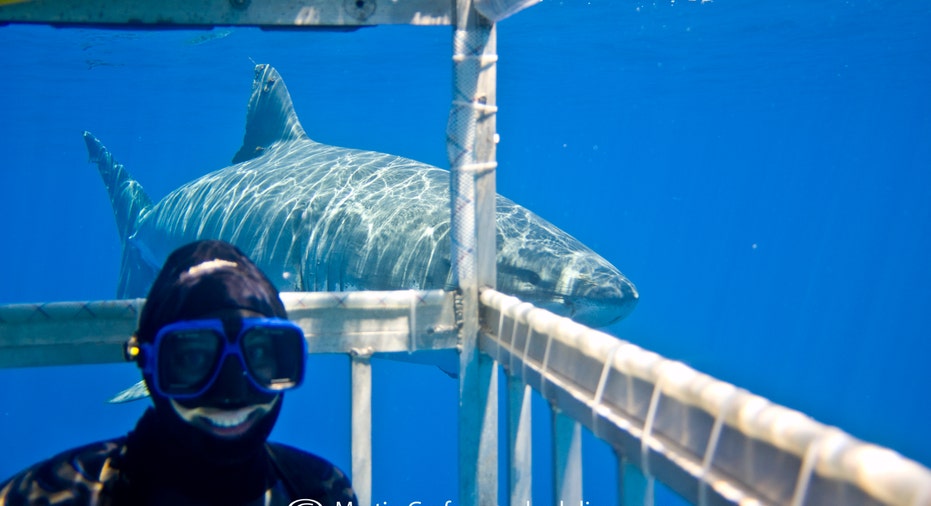Shark Diving Thrives, Saving Sharks Around the World

With Shark Week just around the corner and the recent viral success of SyFy’s Sharknado, the most feared fish in the sea is hotter than ever. And television ratings aren’t the only beneficiary. According to a recent study from the University of British Columbia and Pew, sharks are now worth more alive, swimming around in the ocean, than they are in a bowl of shark fin soup. Global shark fisheries produce $630 million annually, but their value has been declining for the last decade.
While shark ecotourism (like cage-diving with sharks) is generating only $314 million annually, it’s on the rise – and expected to be worth more than $780 million by 2033, according to University of British Columbia researchers. And as shark ecotourism begins to take a bigger bite out of travelers’ wallets, some American businesses are benefiting.Shark Diving Off the Coast of California California is situated near two of the best locations in the world to see great white sharks. Great White Adventures VP James Moskito says the Farollon Islanda, located 30 miles from San Francisco, and Isla Guadalupe, off the coast of Baja Mexico, are two prime areas for cage-diving with sharks. Moskito has been running cage-diving expeditions since 1998, and says for the last seven years, all of Great White Adventures’ trips have been sold out. “We’ve had more competitors come down in Guadalupe with us, and they too are at capacity,” he says. Shark Diver, another company that hosts trips to Isla Guadalupe, is also doing great business. CEO Martin Graf says the company hosts approximately 12 five-day trips a year, charging $3,100 per person. “The popularity has definitely gone up … Shark Week has piqued the interest in anything shark,” says Graf. Moskito agrees, “During Shark Week, we know our phone is going to ring off the hook.” While Graf cautions that television shows on sharks sensationalize the animals, he says the interest provides Shark Diver with a great opportunity to show people what sharks are really like.
“What got me hooked is … they actually look [people] straight in the eye. Their eyeballs pop from person to person, and they definitely recognize individuals,” says Graf. He adds that in the 12 years he’s been in the shark ecotourism business he hasn't experienced any major safety issues.How Shark Diving Saves Sharks’ Lives “From a big picture perspective, shark ecotourism is absolutely much more sustainable than fishing sharks for fins,” says Sebastian Troeng, a vice president with Conservation International. Troeng adds that as diving increases in popularity and generates more and more revenue, there will be more of an incentive to keep sharks alive – rather than killing them for shark fin soup. Aside from proving the value of living sharks, shark ecotourism businesses can also be invaluable to research and conservation efforts more directly. Graf says Shark Diver helps identify individual sharks for research purposes, as great white sharks all have unique coat patterns. “Being in the water taking pictures of them, we have identified 148 individual sharks,” he says. These are crucial for behavioral studies of the great white population. Graf says his company also started the Shark-Free Marina movement, now operated by the Humane Society, which gets marinas to promise not to allow fishing boats back in the marina if they have a shark on board. He says Shark Diver and other responsible shark ecotourism companies also play an instrumental role in chasing off fishers targeting sharks. “There are poachers there, and were we not there chasing them off, they would have poached sharks. We’re sort of like a watchdog,” he says. And Moskito says encouraging a love of sharks in tourists can have long-lasting positive benefits. “California is still looking at adding the great white shark to the state endangered species list,” he says. “A lot of those people who petition are my past customers.”



















